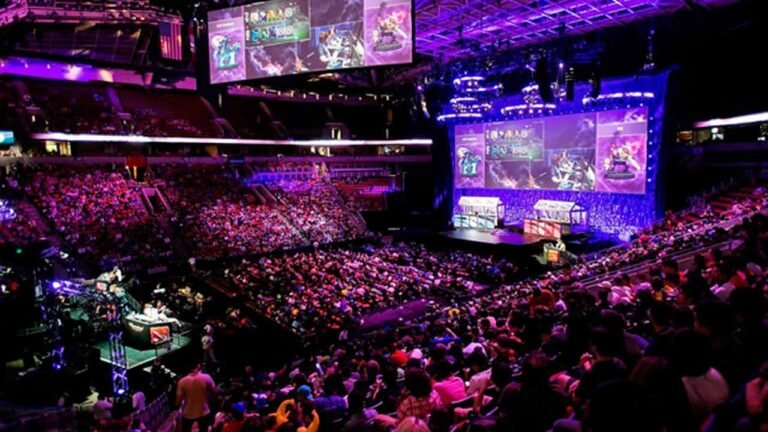
Sustainable Architecture: The Future is Green
As we progress into 2024, sustainable architecture has become a foundational aspect of the design landscape, marking a shift toward environmentally conscious practices. This movement is characterized by the use of eco-friendly materials, such as reclaimed wood, recycled metals, and low-VOC paints that minimize environmental impact while enhancing interior spaces. These materials are not merely an aesthetic choice; they serve to promote healthier living conditions and adhere to stringent sustainability standards that architects are increasingly required to meet.
Energy-efficient designs are at the forefront of this trend, with architects utilizing advanced technologies in building systems. Innovations such as passive solar design, thermal massing, and cutting-edge insulation materials are being employed to decrease energy consumption significantly. These strategies not only reduce greenhouse gases but also help occupants experience greater comfort and lower energy bills. Moreover, the integration of renewable energy sources like solar panels and wind turbines is becoming standard practice in modern architectural design, ensuring that new buildings contribute positively to their environments.
Key to this sustainable approach is the concept of biophilic design, which emphasizes the connection between humans and nature. Architects are incorporating elements such as natural light, green walls, and indoor gardens that enhance both the aesthetic appeal and psychological well-being of spaces. This movement towards biophilic architecture supports the increasingly recognized benefits of green spaces within urban settings, prompting a reevaluation of how we interact with our environments.
Moreover, the importance of obtaining LEED (Leadership in Energy and Environmental Design) certification cannot be understated. This certification acts as a benchmark for sustainability in building practices, guiding architects in their pursuit of eco-friendly solutions. Notable examples of innovative green architecture include the Bosco Verticale in Milan, which showcases vertical forest principles, and the Edge in Amsterdam, recognized for its remarkable energy-efficiency features. As more professionals engage with sustainable architecture, the future looks greener, paving the way for a more ecological approach to design.
Smart Homes: Integrating Technology for Convenience
The trend of smart home technology is revolutionizing the fields of architecture and interior design in 2024. As more people seek to incorporate automation into their living spaces, architects and designers are increasingly focusing on how these innovations can enhance convenience, comfort, and efficiency in everyday life. The growing prevalence of the Internet of Things (IoT) enables homeowners to remotely control various devices, from lighting and heating to security systems and appliances, creating a seamless living experience.
Smart home integration allows for an unprecedented level of personalization in interior design. Homeowners can customize their environments to suit their needs and preferences, utilizing smart devices to adjust settings with minimal effort. This can include automated lighting systems that adapt to natural light conditions or thermostats that learn the homeowners’ routines to maintain optimal comfort. Such functionalities transcend mere convenience; they promote energy efficiency and reduce living costs, making them appealing to the environmentally conscious consumer.
Moreover, cutting-edge gadgets are designed with aesthetics in mind, seamlessly blending into modern interiors without detracting from the overall design ethos. For instance, smart speakers can be aesthetically integrated into a room’s decor, while smart blinds offer both functionality and elegance. This marriage of technology and design creates spaces that are not only visually appealing but also equipped with the latest innovations that simplify home management.
As technology continues to advance, the implications for architectural design and interior decor become even more pronounced. Designers will be challenged to remain innovative while accommodating advancements in smart home technology. By embracing these trends, they can create functional, stylish living spaces that cater to the demands of modern lifestyles. As we move forward, the incorporation of smart home features is likely to become a staple in architectural practices, enhancing the overall experience of contemporary living.
Minimalism and Maximalism: A Dual Approach
As we look toward 2024, two distinct design philosophies are prominently shaping the landscape of architecture and interior design: minimalism and maximalism. Minimalism emphasizes simplicity and function, advocating for decluttered spaces that prioritize essential elements. This approach is characterized by a calm, serene aesthetic, often using a neutral color palette paired with clean lines and geometric forms. Minimalism seeks to eliminate distractions, allowing homeowners to create sanctuaries that feel spacious and organized. With an emphasis on sustainable materials and multifunctional furniture, minimalist design not only enhances the visual appeal but also promotes an eco-friendly lifestyle.
On the contrary, maximalism celebrates richness, vibrancy, and personal expression. This style is best described through its use of bold colors, diverse textures, and a mix of patterns and styles. Maximalism encourages layering different elements, creating visually stimulating environments that tell a story. Homeowners are empowered to curate collections of art, textiles, and artifacts, allowing them to express their individuality and experiences through their living spaces. Eclectic décor choices and an abundance of accessories characterize maximalism, creating immersive atmospheres that are both dynamic and inviting.
The dual approach of minimalism and maximalism offers exciting opportunities for blending these contrasting styles. Designers and homeowners are increasingly experimenting with finding a balance, utilizing the serene qualities of minimalism to ground the exuberance of maximalism. For instance, a minimalist room might serve as a backdrop for a few carefully chosen maximalist pieces, such as a vibrant artwork or an eclectic collection. This fusion encourages an environment where simplicity and complexity can coexist, enriching interior spaces and catering to diverse tastes. By understanding these design philosophies, individuals can craft spaces that reflect their unique identities, merging tranquility with vibrant expression.
Adaptive Reuse: Reviving Spaces with Purpose
Adaptive reuse is an innovative trend in architecture that focuses on repurposing existing structures to meet modern needs. This practice not only preserves historical buildings but also contributes to the sustainability movement by reducing waste and resource consumption associated with new construction. By revitalizing old buildings, architects aim to maintain the cultural essence of a community while providing functional spaces that cater to contemporary demands.
Successful adaptive reuse projects highlight the versatility and creativity involved in this design approach. A remarkable example is the transformation of industrial warehouses into vibrant mixed-use developments. These projects often feature residential units, office spaces, and retail establishments, fostering a sense of community while enhancing the architectural landscape. Another exemplary case is seen in the conversion of historic factories into modern cultural hubs, effectively blending the past with the present. Such efforts not only breathe new life into neglected buildings but also create engaging environments that enrich the urban experience.
The benefits of retaining historic structures extend beyond aesthetic appeal. By reducing the need for new materials, adaptive reuse significantly lowers the carbon footprint of construction projects. This approach emphasizes sustainability, which is becoming increasingly critical in modern design. Furthermore, preserving buildings with historical significance contributes to the identity and heritage of a locale, making communities more resilient amidst rapid urban development.
However, adaptive reuse presents several creative challenges. Architects must navigate structural limitations, comply with building codes, and address the needs of future occupants while respecting the original character of the space. This balance between innovation and preservation is vital for the success of adaptive reuse projects.
Ultimately, the trend of adaptive reuse serves as a testament to the harmonious coexistence of history and modernity, allowing architects and designers to create meaningful spaces that honor the past while embracing the future.
Nature-Inspired Interiors: Bringing the Outdoors In
In recent years, there has been a marked shift in architectural and interior design trends, with a growing emphasis on nature-inspired interiors. This approach harmoniously blends indoor spaces with natural elements, resulting in environments that promote wellbeing and tranquility. One of the most fundamental aspects of this trend is the adoption of open floor plans, which allow for a seamless transition between different living areas. Such layouts not only enhance spatial flow but also enable natural light to permeate through the space, creating an inviting atmosphere.
Large windows have become increasingly popular for their ability to frame outdoor views and bring the beauty of nature indoors. By maximizing daylight and connecting interior spaces with natural surroundings, designers encourage residents to appreciate the changing seasons and the calming effects of nature. This integration of the outside with the indoor environment has been shown to enhance mood and overall mental health.
The use of natural materials is another cornerstone of nature-inspired interiors. Designers are gravitating towards organic materials such as wood, stone, and bamboo. These materials not only provide aesthetic warmth but also resonate with the principles of sustainability. Natural color palettes, including greens, browns, and earth tones, further reinforce this connection to the outdoors, fostering a sense of relaxation and comfort. Incorporating greenery, whether through potted plants or vertical gardens, plays a crucial role in enhancing air quality while creating a more vibrant living space.
Ultimately, nature-inspired interiors reflect a deeper understanding of the importance of biophilic design in fostering a harmonious lifestyle. As the demand for healthier living environments continues to grow, the principles of integrating natural light, organic materials, and greenery into our interiors are poised to shape architectural trends well into 2024 and beyond.
Color Trends: Bold Choices and Subtle Hues
As we look forward to 2024, the landscape of architecture and interior design is witnessing significant shifts in color trends. These trends not only reflect personal tastes but also the psychological effects that colors have on mood and well-being. In this context, color selection becomes a pivotal aspect of design that influences how occupants interact with their environment.
Bold colors are making a striking statement this year, with deep greens, rich blues, and vibrant yellows gaining popularity. These hues evoke a sense of confidence and energy, making them ideal for spaces that seek to foster creativity and vitality. Interior designers are increasingly utilizing these bold tones in accent walls, furniture pieces, and decorative elements to create focal points that draw the eye and spark conversations. For instance, a deep emerald accent wall can serve as a dramatic backdrop for a minimalist living space while infusing it with a luxurious feel.
Conversely, subtle hues remain essential for creating calming and inviting spaces. Soft pastels, muted earth tones, and gentle neutrals are expected to dominate residential and commercial designs in 2024. These colors promote tranquility and can make smaller spaces appear larger and more open. Color experts suggest that incorporating shades like lavender, sage green, or light beige can enhance relaxation and promote a sense of peace within a room. Moreover, these subtle shades can be ingeniously combined with bolder accents for a balanced aesthetic, creating depth without overwhelming the senses.
Furthermore, the impact of natural light on color perception is crucial. As designers experiment with lighting techniques, the way colors appear in various settings is evolving. Implementing dynamic lighting solutions, including smart LED systems, allows for the transformation of a space’s atmosphere at different times of the day. This versatility ensures that both bold and subtle hues can be appreciated to their fullest potential. Therefore, understanding color psychology and the latest trends is essential for creating impactful environments in the coming year.
Flexible Spaces: Design for the Modern Lifestyle
As we move into 2024, the trend towards designing flexible spaces is becoming increasingly prominent, driven by the shifting needs of modern living. Today’s residential and commercial spaces must cater to a variety of activities, making adaptability a key feature in architecture and interior design. With the rise of remote work and the diversification of family structures, the demand for multifunctional areas has never been greater.
Home offices, once a luxury, have transformed into essential components of everyday life. Designers are now focusing on creating environments that can easily transition from a workspace to a social area. This involves the use of convertible furniture, such as foldable desks and modular seating, enabling homeowners to optimize their living space based on current needs. For instance, a dining room can double as a conference area, facilitated by the strategic placement of adaptable furniture that encourages both productivity and relaxation.
In commercial design, flexibility remains a crucial consideration. Many businesses are now re-evaluating their office layouts to support collaborative spaces alongside private workstations. This shift often manifests in open-plan designs, which are complemented by movable partitions allowing teams to configure their environments as required. Additionally, shared amenities are becoming more prevalent, promoting social interaction among employees, which is vital for team cohesion and morale.
Design strategies that facilitate these flexible spaces emphasize the importance of multifunctionality. Designers are harnessing creative solutions such as integrated storage, clever zoning, and various lighting options to enhance the versatility of interiors. With these techniques, spaces can adapt not only to the immediate needs but also to changing dynamics over time. The pursuit of flexible design ultimately reflects a deeper understanding of how architecture and interior design can enhance everyday living by fostering environments that evolve alongside their occupants.
Cultural Influences in Design: A Global Perspective
As we progress into 2024, the significance of cultural influences in architecture and interior design continues to grow. Designers are increasingly drawing upon the rich tapestry of global cultures, recognizing that regional styles, materials, and customs enhance both the aesthetic and functional aspects of their projects. This shift towards a more global perspective allows for a profound appreciation of diverse traditions, resulting in architecture that is not only visually appealing but also deeply rooted in cultural significance.
Regional architectural styles seen around the world, such as Mexican adobe structures or Japanese minimalist aesthetic, are being reimagined through contemporary practices. Designers are integrating local materials, such as bamboo or clay, into modern designs, ensuring that these creations reflect the geographical and cultural essence of their surroundings. This emphasis on using locally sourced materials promotes sustainable design practices, thereby reducing the carbon footprint associated with transportation while supporting local economies.
Moreover, the integration of traditional craft techniques into modern design narratives highlights the value of heritage and cultural continuity. Techniques that have been passed down through generations are being celebrated, creating a dialogue between the past and the present. This not only enriches design solutions but also fosters a sense of identity and belonging among inhabitants. Inclusivity in design is becoming increasingly prevalent as architects and designers strive to acknowledge and integrate various cultural narratives, allowing for spaces that resonate with a broader audience. Thus, a global perspective in architecture and interior design paves the way for richer, more meaningful environments that honor diversity.
In summary, the ongoing dialogue between cultures is transforming contemporary architecture and interior design. By appreciating and incorporating global influences, designers can create spaces that are representative of a multitude of experiences, fostering unity and understanding in our increasingly interconnected world.
Health and Wellness in Design: Creating Healing Spaces
In the evolving landscape of architecture and interior design, the integration of health and wellness principles has become increasingly prominent. As society shifts its focus towards holistic living, designers are exploring innovative strategies to create environments that not only appeal aesthetically but also nurture the physical and mental well-being of occupants. One key aspect is the improvement of air quality within built spaces. This can be achieved through the selection of materials that emit lower levels of volatile organic compounds (VOCs) and the incorporation of advanced filtration systems and ample ventilation. The introduction of indoor plants and green walls further encourages a healthier atmosphere by naturally enhancing air purification and increasing humidity levels.
Another vital consideration is acoustics. In an age where noise pollution increasingly impacts daily life, architects and interior designers are employing soundproofing techniques and materials to create serene environments. These may include acoustic panels and strategic spatial layouts that minimize sound transmission. By addressing the auditory environment within spaces, designers can significantly contribute to reducing stress levels and enhancing concentration, ultimately fostering improved mental health among users.
Furthermore, the spatial layout of areas plays a crucial role in promoting well-being. Open floor plans, designated areas for relaxation, and intuitive navigation paths can significantly impact the user’s experience. Incorporating spaces for social interaction encourages community-building, which is essential for mental health. Additionally, ensuring adequate natural light through large windows or skylights helps regulate circadian rhythms, thus boosting mood and enhancing productivity.
As we move forward into 2024 and beyond, the emphasis on health and wellness in design will only intensify. Embracing these principles will create healing spaces that support both mental clarity and physical health, aligning with the global shift towards more conscious living environments. In conclusion, the future of architecture and interior design will increasingly reflect the essential relationship between our surroundings and our overall well-being.




